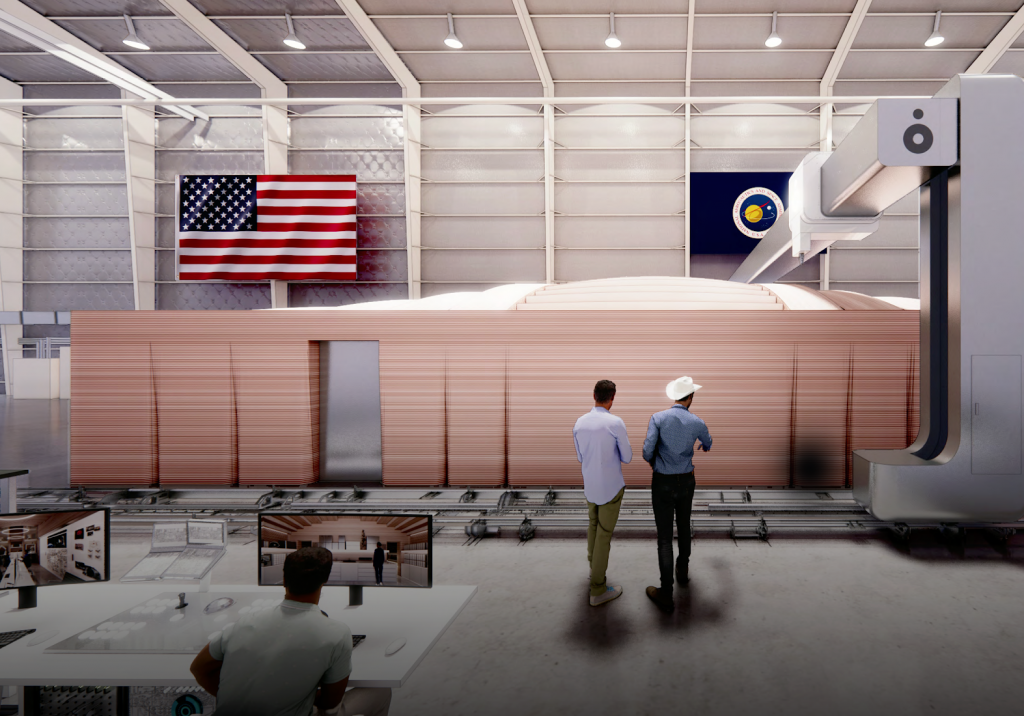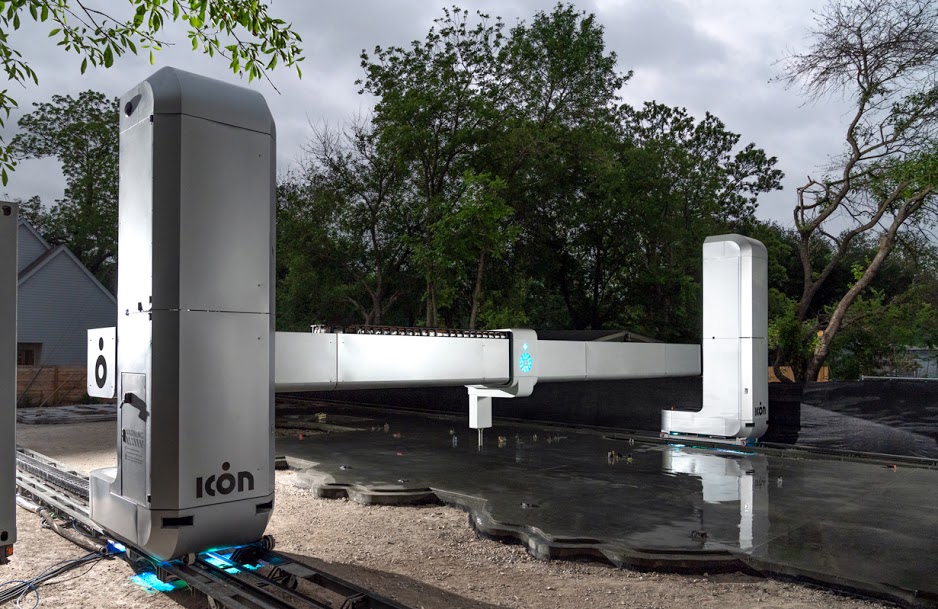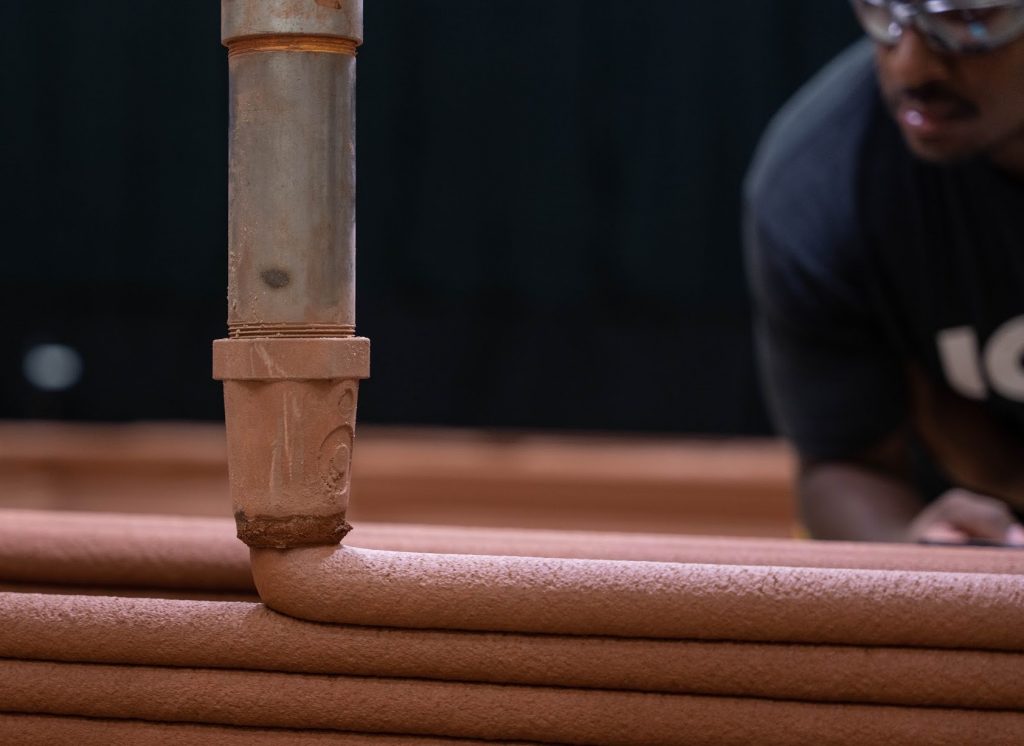The nominations for the 2021 3D Printing Industry Awards are now open. Who do you think should make the shortlists for this year’s show? Have your say now.
Texan construction firm ICON has been subcontracted to 3D print a habitat that accurately recreates the conditions future astronauts will experience when they visit the surface of Mars.
Codenamed ‘Mars Dune Alpha,’ the 1,700 sq. ft structure is set to be built using ICON’s Vulcan 3D printer, and deployed in long-term mission simulations at NASA’s Johnson Space Center. Through the three-year field test, NASA aims to assess the efficacy of its nutrition system, as well as the physical and behavioral impact of prolonged exposure to conditions on the red planet.
“This is the highest-fidelity simulated habitat ever constructed by humans,” said Jason Ballard, CEO of ICON. “We wanted to develop the most faithful analog possible to aid in humanity’s dream to expand into the stars. 3D printing the habitat has further illustrated to us that construction-scale 3D printing is an essential part of humanity’s toolkit on Earth, and to go to the Moon and Mars to stay.”
“Mars Dune Alpha is intended to serve a very specific purpose–to prepare humans to live on another planet.”

ICON’s off-world ambitions
Leveraging its proprietary Vulcan 3D printer, which has a capacity of some 2,000 sq. feet, ICON has embarked on a wide-ranging international construction program over the last few years. Back in 2018, the firm raised $9 million, and working with the non-profit New Story, deployed some of that cash to build the first authorized printed home in the United States.
Since then, ICON has scaled the use of its 3D printer, erecting an affordable housing community for the homeless in Latin America, as well as huge ‘vehicle hide structures’ for the U.S. Marines Corps. The firm has also continually upgraded its technologies, unveiling plans for a ‘next-gen’ Vulcan system earlier this year, which is twice as fast and features a larger 3,000 sq. ft capacity than the original.
Thanks to the increased speed, scale and design flexibility enabled by ICON’s technologies, they’re now increasingly finding aerospace applications as well. In March 2021, the company worked with NASA to develop the world’s first 3D printed lunar launch and landing pad, which was found to not only be capable of withstanding a static-fire test, but proved reusable too.
The pad itself was also produced from lunar regolith, thus in future, it could be 3D printed on the Moon, allowing NASA to reduce its costs associated with launching building materials into space. Likewise, as part of Project Olympus, ICON is now developing an off-world construction system for lunar deployment, in one of the many NASA-mandated applications the firm has started to find for its technology.

Aiding mission ‘CHAPEA’
Designed by architecture firm Bjarke Ingels Group (BIG), Mars Dune Alpha is being built from the ground up to replicate the experience astronauts can expect to find on the Martian surface. According to ICON, the structure will feature varying ceiling heights that are divided by an overarching shell, with each area providing crew members with a “unique experience” to avoid spatial monotony and fatigue.
In terms of layout, the Martian base is set to include four private quarters, workstations, medical stations and areas for growing food, with shared living spaces found in between. The habitat will also be fitted with customizable lighting, temperature and sound controls as well as movable furniture, allowing occupying astronauts to truly turn it into a home.
Once ready, Mars Dune Alpha will be deployed within NASA’s Crew Health and Performance Exploration Analog, or ‘CHAPEA’ missions. In essence, the program entails a series of three one-year Martian surface simulations, which are designed to inform the agency’s risk, resource and crew management strategies during future long-term missions there.
In preparation for its protracted analog study, NASA has now begun recruiting for volunteers to stay inside ICON’s 3D printed habitat. Applications to join the CHAPEA crew and take part in a year-long mission starting in Fall 2022, are being accepted until mid-September 2021. Prospective applicants can find out more about the program’s entry criteria here.
“Together with NASA and ICON, we are investigating what humanity’s home on another planet will entail from the human experience,” added Bjarke Ingels, Founder of BIG. “The data gained from this habitat research will directly inform NASA’s standards for long-duration exploration missions, and as such, will potentially lay the foundation for a new Martian vernacular.”
“Mars Dune Alpha will take us one step closer to becoming a multiplanetary species.”

Construction 3D printing takes-off
Although ICON’s aerospace exploits are somewhat of a rarity in the construction 3D printing space, the scale of concrete additive manufactured structures continues to grow at a rapid pace. Just last month, the Dubai Electricity and Water Authority (DEWA) opened an entirely-3D printed R&D Center, which could allow it to make significant operational gains.
In the UK, meanwhile, the contractors behind the London terminal of the country’s upcoming High Speed 2 (HS2) rail network have announced plans to 3D print elements of the tunnel. By adopting ChangeMaker 3D’s ‘Printfrastructure’ technology, the project’s engineers aim to accelerate the line’s construction, and build it more sustainably than before.
Elsewhere, in the Netherlands, construction firms BAM and Weber Beamix have started to erect what will be the world’s longest 3D printed concrete pedestrian bridge. Once built in the city of Nijmegen, the structure will stand at a length of 29.5m (or 97 feet), making it 11 feet longer than the current record holder constructed by a team at Tsinghua University.
The nominations for the 2021 3D Printing Industry Awards are now open. Who do you think should make the shortlists for this year’s show? Have your say now.
To stay up to date with the latest 3D printing news, don’t forget to subscribe to the 3D Printing Industry newsletter or follow us on Twitter or liking our page on Facebook.
For a deeper-dive into additive manufacturing, you can now subscribe to our Youtube channel, featuring discussion, de-briefs and shots of 3D printing in-action.
Are you looking for a job in the additive manufacturing industry? Visit 3D Printing Jobs for a selection of roles in the industry.
Featured image shows ICON’s Vulcan 3D printer installed at the NASA Johnson Space Center. Photo via ICON.



